

1. Smile by Roddy Doyle
(7 Rave, 3 Positive)
“His darkest and perhaps finest work since The Woman Who Walked Into Doors 20 years ago, Smile combines tropes from the various strands of Doyle’s career – childhood memories from the Barrytown trilogy, middle-aged regrets from The Guts and Bullfighting, pub conversations from Two Pints – and merges them into a unique novel, one that is terribly moving and even, at times, distressing, while saving its greatest surprise until the end.”
–John Boyne (The Guardian)
*
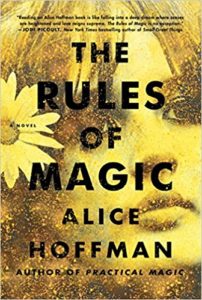
2. The Rules of Magic by Alice Hoffman
(7 Rave)
“…an enchanting prequel … The magic in these endearing witches is in their everydayness. They cope with high-school mean girls, apply to college, play music and oh yes, can hear each other’s thoughts, move furniture with their minds and are unable to sink in water. Like every human being, the witches are doomed to lose the ones they love most. This is the kind of book you race through, then pause at the last 40 pages, savoring your final moments with the characters. Hoffman has conjured up another irresistible novel in The Rules of Magic.”
–Patty Rhule (USA Today)
*
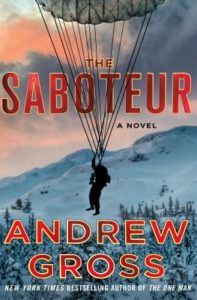
3. The Saboteur by Andrew Gross
(5 Rave, 1 Mixed)
“The Saboteur is more historical than fiction, based strongly on actual raids during World War II in Vemork, Norway … The setting acts as a major supporting character, both antagonist and protagonist. The plant is set atop unscalable cliffs with an impenetrable gorge, connected by a single suspension bridge, and is under constant heavy guard. Both the surrounding terrain and the weather were unforgiving … Awe-inspiring, action-packed, and gripping.”
–Elise Cooper (CrimeSpree)
*
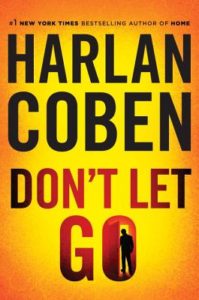
4. Don’t Let Go by Harlan Coben
(5 Rave, 1 Positive, 1 Pan)
“…[a] well-tuned new mystery … Coben does his usual professional job on the central mystery, which involves the violent deaths of a detective’s brother and the brother’s girlfriend, but his greater talent lies in his warmhearted descriptions of life in places like Westbridge…That kind of writing is what we call poetry, and it falls on the ear like the sounds of summer.”
–Marilyn Stasio (The New York Times Book Review)
*

5. She Rides Shotgun by Jordan Harper
(3 Rave, 2 Positive)
“That, in short, is a talented author at the peak of his game delivering a fast-paced, gritty, ultraviolent narrative that, more than put him on the crime map, should rocket him into the upper echelons of contemporary noir … She Rides Shotgun is a debut novel, but that doesn’t mean Harper can’t be called a master. Calling him a ‘new’ author isn’t exactly accurate, so master does the job pretty well.”
–Gabino Iglesias (Vol. 1 Brooklyn)
**
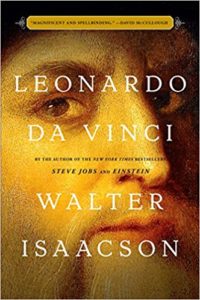
1. Leonardo da Vinci by Walter Isaacson
(5 Rave, 3 Positive, 1 Mixed)
“He comes to life in all his remarkable brilliance and oddity in Walter Isaacson’s ambitious new biography … saacson’s approach, true to his background, is fundamentally journalistic. No intellectual peacocking for him, and though his writing is certainly graceful, it is never needlessly ornate. But make no mistake: He knows his stuff, crowdsourcing, with extreme diligence, an array of art, historical, medical and other experts to arrive at a vigorous, insightful portrait of the world’s most famous portraitist. Da Vinci groupies won’t find startling revelations here. Isaacson’s purpose is a thorough synthesis, which he achieves with flair.”
–Alexander C. Kafka (The Washington Post)
*
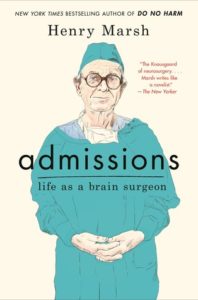
2. Admissions: Life as a Brain Surgeon by Henry Marsh
(5 Rave, 2 Positive)
“..an elegant, thoughtful examination of his life as a neurosurgeon. The book is not just a recounting of memorable patients and cases, but a steady, fearless look in the mirror: at what brought him to medicine; his regrets (patients he lost; patients he wished he had lost, if only to save them from a slow, difficult death); his anxieties with each new case; his successes and failures; and his mixed emotions about his imminent retirement, which he views both as freedom and as empty, purposeless void.”
–Laurie Hertzel (The Minneapolis Star Tribune)
*
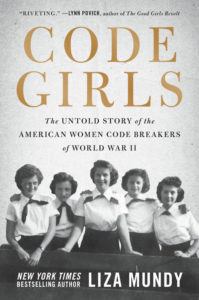
2. Code Girls by Liza Mundy
(5 Rave, 2 Positive)
“We owe Mundy gratitude for rescuing these hidden figures from obscurity. Even more valuable is her challenge to the myth of the eccentric, inspired, solitary male genius, like Alan Turing. As Mundy demonstrates, code-breaking in World War II ‘was a gigantic team effort,’ and ‘genius itself is often a collective phenomenon.’ Codes were broken by the patient labor of groups of people ‘trading pieces of things they have learned and noticed and collected.’ I suspect there are more stories of hidden figures waiting to be told. But in writing this book, Mundy has broken some of the codes that kept them hidden for so long.”
–Elaine Showalter (The Washington Post)
*
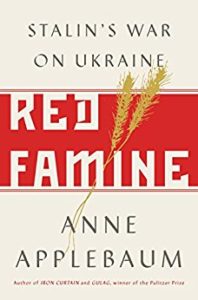
4. Red Famine by Anne Applebaum
(6 Rave, 2 Positive, 1 Pan)
“…a richly detailed history of the great famine … Applebaum has painstakingly mined a vast array of sources, many of which were not available when the historian Robert Conquest wrote his pioneering history of the famine, The Harvest of Sorrow, 30 years ago: oral histories of survivors; national and local archives in Ukraine, including those of the secret police; and archives in Russia, which opened in the 1990s and then partly closed again, but not before various scholars published collections of documents from them … It is a reminder of the lengths that demagogues will go to in order to suppress or distort the truth — something no less a problem in many a country today than it was in the Soviet Union more than eight decades ago.”
–Adam Hochschild (The New York Times Book Review)
*

5. Nine Continents by Xiaolu Gao
(4 Rave, 2 Positive)
“Ms. Guo’s memoir offers a haunting account of how China’s rapid shift from Maoist ideology to market-driven growth has simultaneously created extraordinary opportunities for the Chinese people and intensified their craving for meaning and purpose in the face of continuing authoritarian controls … She is especially vivid—and funny—in describing the moments when her childhood intersected with high politics … Nine Continents shows the rewards of listening to an unleashed voice remembering and speaking with full freedom.”
–Julian B. Gewirtz (The Wall Street Journal)
***

